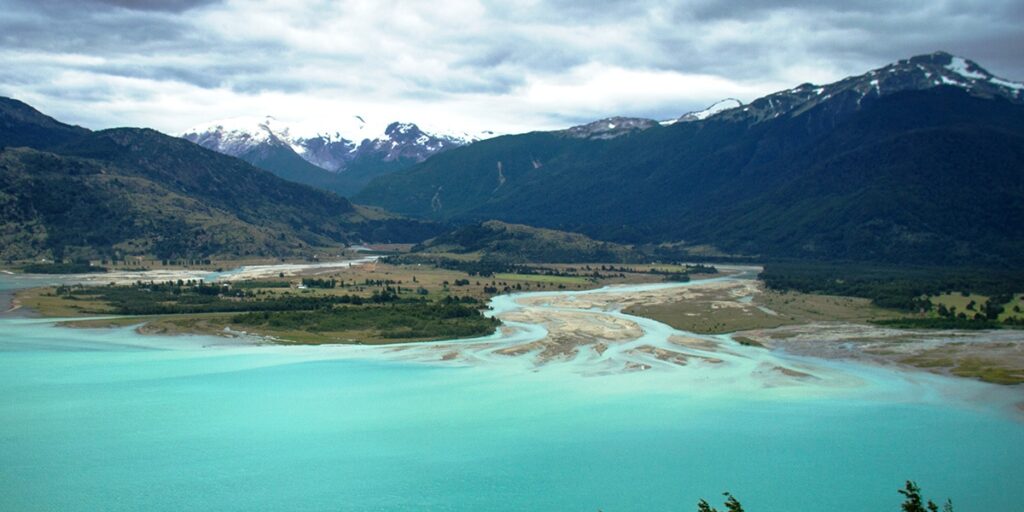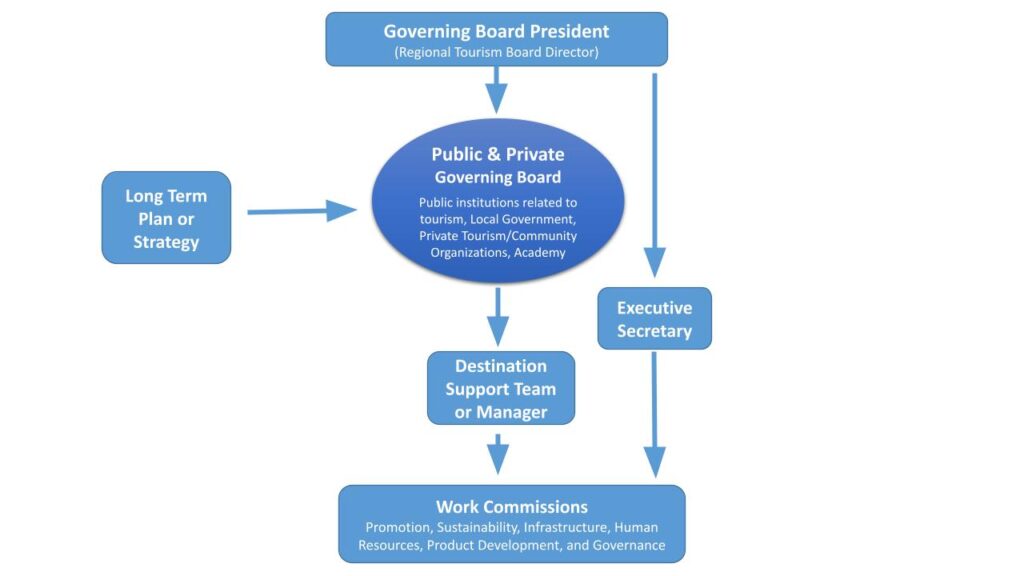Some beautiful destinations are recognized as such with special governmental designations. That may provide an opportunity for a holistic approach to destination management. Fernando Ojeda and Natalia Naranjo describe how the Chelenko Lake area of the Chilean Patagonia has done just that.
Chile’s Chelenko Adopts a Structure for Stewardship
Chelenko is a scenic, nature-based destination in the Aysén region in the Chilean Patagonia. The Chilean government designated it a Touristic Interest Zone (Zona de Interés Turístico – ZOIT) in 2000, due to rising tourism and an increasing need to protect the lake.

“In 2030 it will be a consolidated touristic destination, responsible and inclusive with the communities, that protects and values its natural resources, its identity and traditions, and assures sustainable development for the local communities. Generosity and kindness of its inhabitants are an important part to generate a high level of satisfaction for visitors.”
Context
Chelenko was the first place to receive the ZOIT designation from the Chilean government. This was an opportunity to strengthen participatory planning skills; contribute to the conservation of touristic resources, and also promote public and private investments in this area.
The Chelenko ZOIT is an area defined within the General Carrera Province, encompassing the General Carrera Lake – better known as Chelenko Lake – as well as Bertrand Lake and the surrounding area. There are more than 10 towns distributed between the two municipalities of Chile Chico and Río Ibáñez.

The main economic activities of the region are agriculture, cattle, mining, and nature-based tourism, which includes hiking, horseback riding, and wildlife watching. Numerous rivers and lakes provide opportunities for sports and adventure activities like recreational fishing, sailing, rafting, and kayaking.
Management Strategy
The main strategy for managing tourism is to establish a collaborative (public and private directorate) and participatory structure to plan and implement actions for the destination – Directorio Público Privado ZOIT Chelenko (Pubic-Private Directorate for the Chelenko ZOIT). Its main characteristic has been to integrate private stakeholders so that they can have greater participation in the governance of the lake. Their continued efforts and commitment have been key to advancing a sustainable agenda, with participation happening at different levels (within the ZOIT plan, outside the ZOIT plan, or at the local level led by the civil society).
Even so, stakeholders’ active involvement can be a challenge; there is an active participation at a local level from both public and private stakeholders regarding their concerns towards sustainability. Being a small community, local leaders are involved in different initiatives beside the tourism activity; they are also involved in other coordination entities like water, electrification, neighborhood committees, etc.

The participatory action plan identified these strategic pillars: promotion, sustainability, infrastructure, human resources, product development, and governance. Here are the key aspects identified for sustainable management of Chelenko and lessons learned since implementing the participatory structure and plan:
- Private plus public governance – a must.
- Government commitment to the process at national, regional, and local levels.
- Governmental support in technical knowledge, data, information, logistics, and facilitation in meetings to strengthen participation from all local stakeholders.
- Involvement and empowerment for enterprises and community.
- A public, concise, long term, and participatory plan based on a diagnosis.
- Measurable goals and regular meetings for follow-up.
- Continuous motivation and team building, especially for community and NGO leaders.
- A private stakeholder corporation that supports the long-term vision regardless of changes in government and public administration. It also allows leveraging resources.
At a public level, key aspects of local engagement towards sustainability have included communication and articulation: training, awareness, access to information, promotion of local identity, tourism awareness campaigns, and development of new touristic products and cultural events. You can see more details here.
On the private side, entrepreneurs have established a network: “Chelenko Redponsable” (“responsible network”). This network is a cooperative of enterprises where all members implement and promote sustainable practices: socio-cultural (local products purchasing, exhibition of regional handcrafts), management (local workers), and environmental aspects (energy efficiency, waste management), working to develop community-based tourism. Many of these leaders are part of the directorate. One of the main topics addressed last year was water quality. Water treatment plant malfunctions, mine tailings, sewage, etc. have generated concerns about water quality and its management, especially for the lake. Chelenko Lake should have one of the purest waters on the world, and the community wants to preserve it for future generations.

Participation of public and private organizations within the destination has succeeded in developing wide commitment toward sustainability in the territory, in large part because local communities love and care about their territory; they love their history and identity. These are of course the main assets for sustainability, providing the destination with a unique sense of place. The community’s sense of co-responsibility within the destination provides a unique tourism experience.
Fernando Ojeda, Tourism Professional, passionate to support sustainable tourism destinations. Today in charge of Touristic Interest Zones in Aysén´s Regional Tourism Office.
Natalia Naranjo Ramos, Development and tourism expert advisor. Country Representative in Colombia for the Canadian Organization for Technical Cooperation –CESO-SACO.

